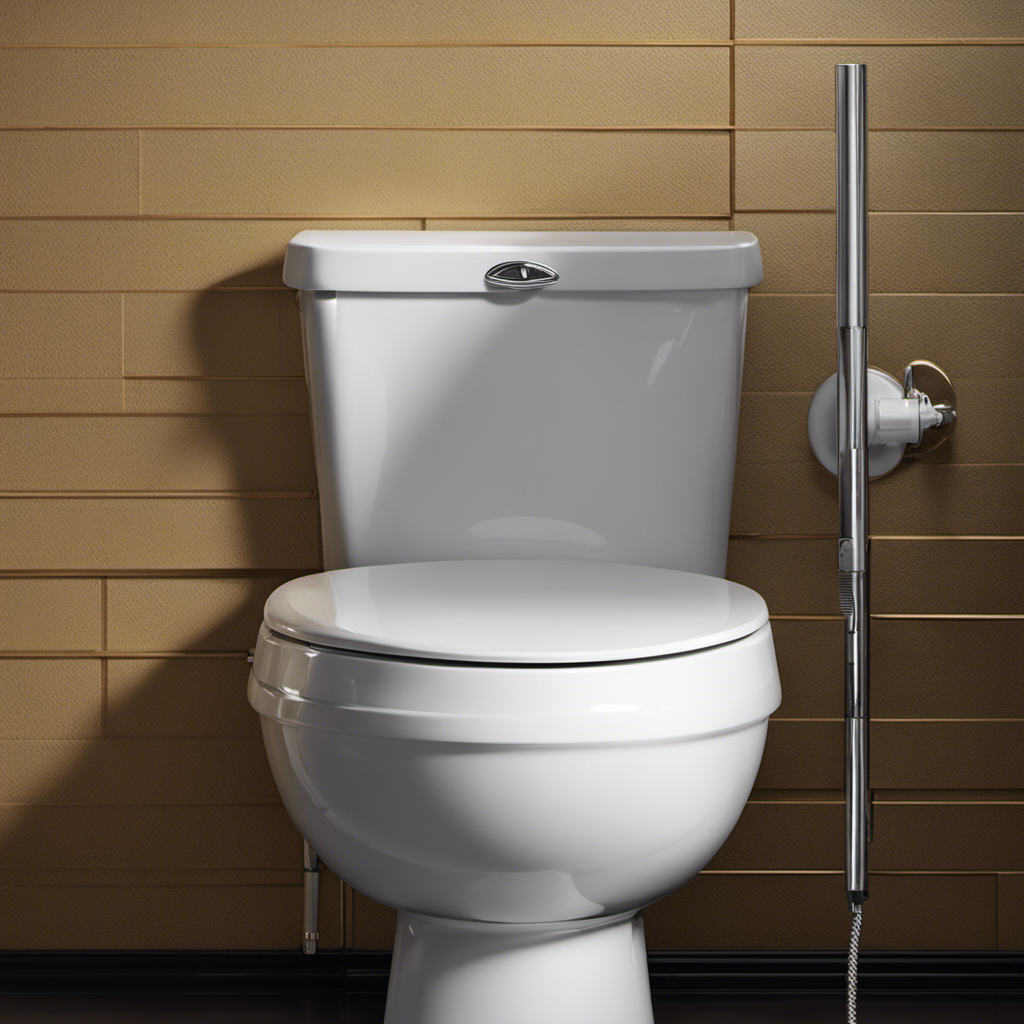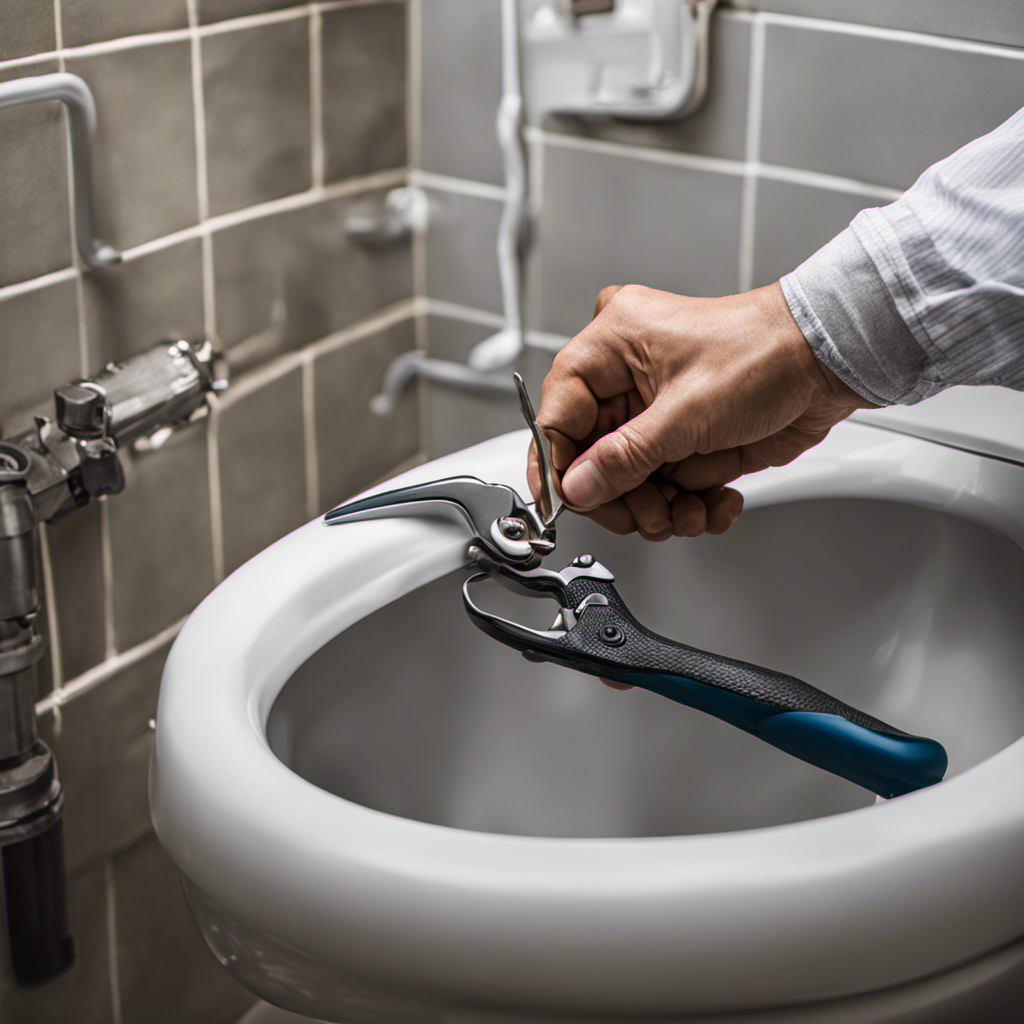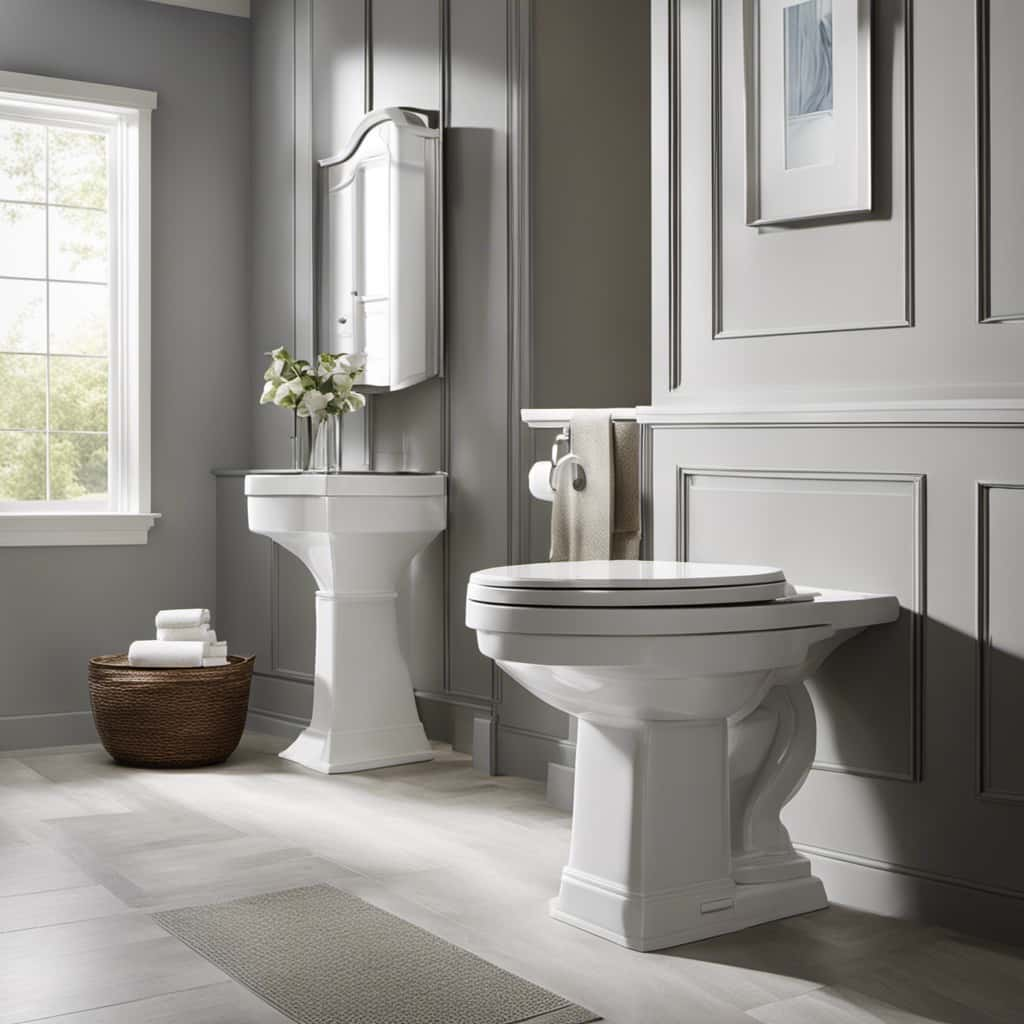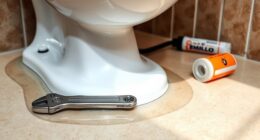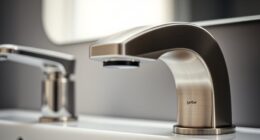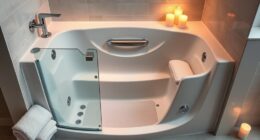As someone who has recently been on the hunt for a new toilet seat, I understand the overwhelming amount of options available.
With so many factors to consider, it’s important to make an informed decision.
In this article, we will explore the different types of toilet seats on the market, how to measure for a perfect fit, and the features and functionalities to look for.
By the end, you’ll have all the knowledge you need to confidently choose the right toilet seat for your bathroom.
Key Takeaways
- Consider the size, material, style, and additional features when choosing a toilet seat.
- Explore different types of toilet seats available in the market, such as wooden seats and heated vs. non-heated seats.
- Measure your current toilet seat for a perfect fit by considering the width, length, hinge distance, and shape.
- Look for features and functionalities such as a soft-close lid, built-in bidet functions, material options, eco-friendly options, and a perfect fit for optimal comfort.
Factors to Consider When Choosing a Toilet Seat
When choosing a toilet seat, it’s important to consider factors such as size, material, and style.
The material of the toilet seat is crucial for durability and comfort. Common toilet seat materials include plastic, wood, and cushioned seats. Plastic seats are lightweight, easy to clean, and affordable. Wood seats are more aesthetically pleasing and durable, but they require more maintenance.
If you’re looking for eco-friendly options, there are toilet seats made from bamboo or recycled materials. These eco-friendly choices help reduce waste and contribute to a greener environment.
Additionally, some toilet seats offer features like slow close hinges or antimicrobial coatings for added convenience and hygiene.
Ultimately, it’s essential to choose a toilet seat material that fits your preferences and budget while considering eco-friendly options for a more sustainable choice.
Different Types of Toilet Seats Available in the Market
There’s a wide variety of toilet seats available in the market. When choosing the right toilet seat, it’s important to consider factors such as comfort, durability, and maintenance. One popular option is the wooden toilet seat. Wood adds a touch of warmth and elegance to the bathroom, but it also has its pros and cons. On the positive side, wooden seats are sturdy and long-lasting. They also provide a natural and comfortable seating surface. However, they require regular cleaning and maintenance to prevent warping or discoloration. Another consideration is whether to opt for a heated or non-heated toilet seat. Heated seats offer added comfort, especially during colder months, while non-heated seats are more affordable and easier to install. Ultimately, the choice between wooden and heated toilet seats depends on personal preference and budget.
Table:
| Pros of Wooden Toilet Seats | Cons of Wooden Toilet Seats |
|---|---|
| Sturdy and long-lasting | Require regular maintenance |
| Natural and comfortable | May warp or discolor |
| Comparing Heated and Non-Heated Toilet Seats |
|---|
| Heated seats offer added comfort |
| Non-heated seats are more affordable |
| Heated seats are especially useful in colder months |
| Non-heated seats are easier to install |
How to Measure Your Toilet Seat for a Perfect Fit
To ensure a perfect fit, you’ll need to measure the dimensions of your current toilet. Here is a step-by-step guide to help you measure your toilet seat accurately:
-
Measure the width: Start by measuring the width of your current toilet seat. Place the measuring tape on one side of the seat and stretch it across to the other side. Make sure to measure the widest part.
-
Measure the length: Next, measure the length of the seat. Place the measuring tape at the back of the seat and stretch it towards the front, measuring the entire length.
-
Measure the hinge distance: Measure the distance between the center of the two hinges. This measurement is crucial for choosing a toilet seat with the correct hinge placement.
-
Measure the shape: Lastly, determine the shape of your toilet seat. It can be either round or elongated. Measure from the front edge of the seat to the center of the mounting holes to determine the shape.
By following these measurements, you’ll be able to find a toilet seat that fits your toilet perfectly.
When considering toilet seat materials, keep in mind that common materials include plastic, wood, and cushioned seats.
As for common toilet seat problems, they can range from loose hinges and cracks to uncomfortable padding and discoloration.
Features and Functionalities to Look for in a Toilet Seat
If you’re looking for a comfortable and convenient option, consider a toilet seat with features like a soft-close lid and built-in bidet functions.
When it comes to material options for toilet seats, there are a few choices available. The most common materials are plastic, wood, and cushioned seats.
Plastic seats are often affordable and easy to clean, while wood seats add a touch of elegance but may require more maintenance. Cushioned seats provide extra comfort but can be more difficult to clean.
If you’re looking for eco-friendly toilet seat options, consider seats made from sustainable materials like bamboo or recycled plastic. These seats are not only environmentally friendly but also durable and stylish.
Remember to choose a toilet seat that fits your toilet’s shape and size for the perfect fit.
Tips for Maintaining and Cleaning Your Toilet Seat
To keep your toilet seat clean and well-maintained, make sure to regularly wipe it down with a mild cleaning solution and avoid using abrasive materials that could damage the surface. Here are some tips to help you maintain and clean your toilet seat effectively:
-
Use a soft cloth or sponge: When wiping down your toilet seat, choose a soft cloth or sponge to avoid scratching the surface. Avoid using rough scrub brushes or abrasive pads.
-
Mild cleaning solution: Use a mild cleaning solution, such as a mixture of water and mild soap, to clean your toilet seat. Avoid using harsh chemicals or bleach, as they can damage the materials.
-
Dry thoroughly: After cleaning, make sure to dry the toilet seat thoroughly to prevent the growth of mold or mildew.
-
Regular inspections: Periodically inspect your toilet seat for any cracks, chips, or loose fittings. If you notice any problems, consider replacing the seat to avoid further damage.
Conclusion
In conclusion, choosing the right toilet seat may seem like a simple task, but it requires careful consideration.
By taking into account factors such as size, material, and functionality, you can ensure a comfortable and durable seat for your bathroom.
Remember to measure your toilet seat accurately and look for features that suit your needs.
Lastly, don’t forget to regularly clean and maintain your toilet seat for hygiene purposes.
So, whether you prefer a basic seat or a high-tech one, make an informed decision and enjoy a pleasant bathroom experience.

